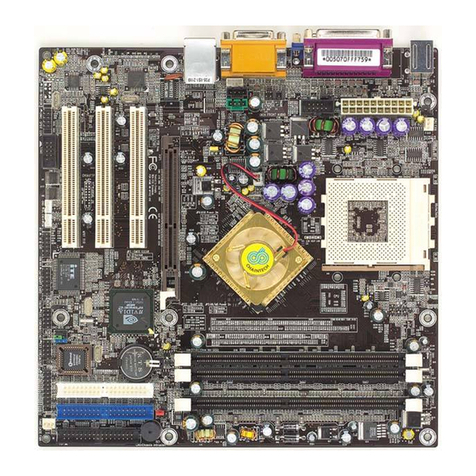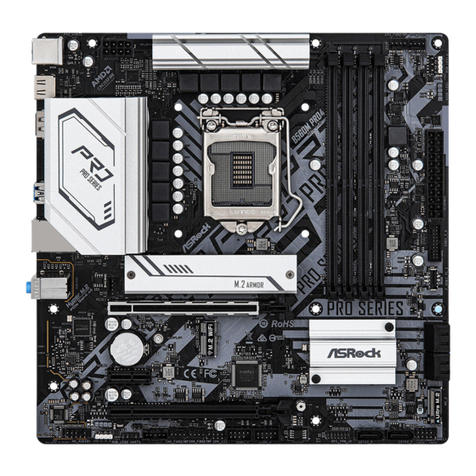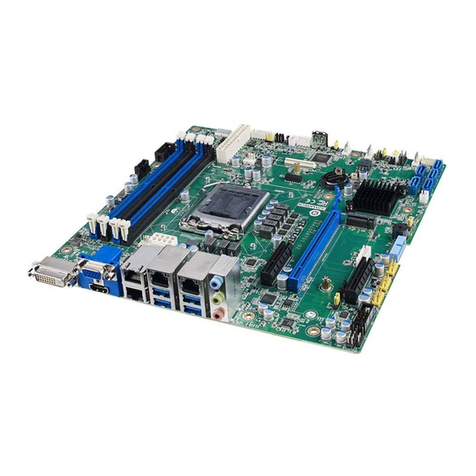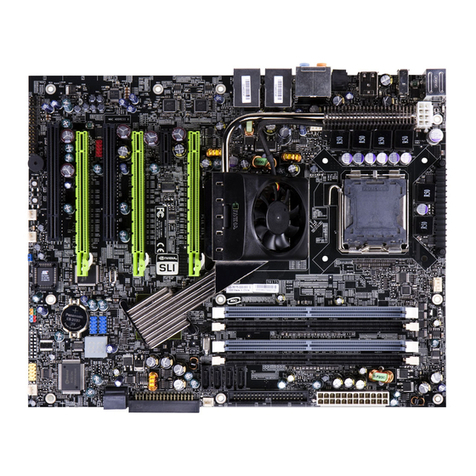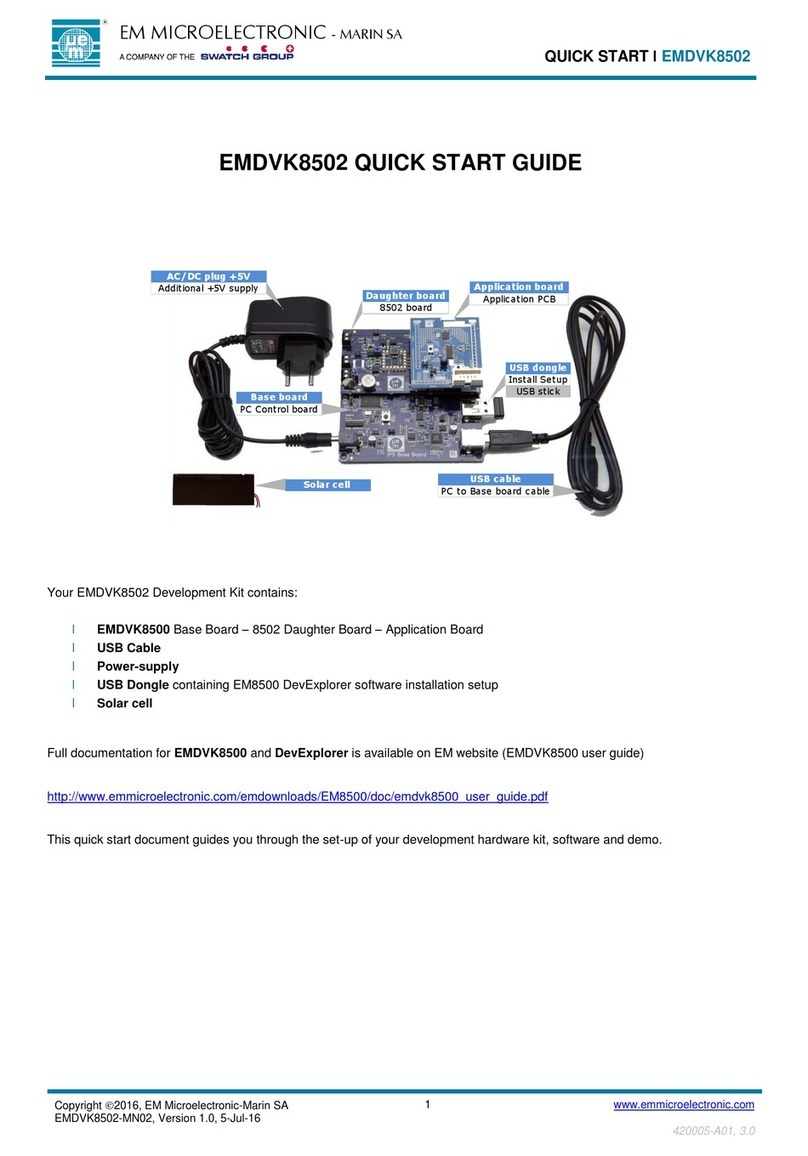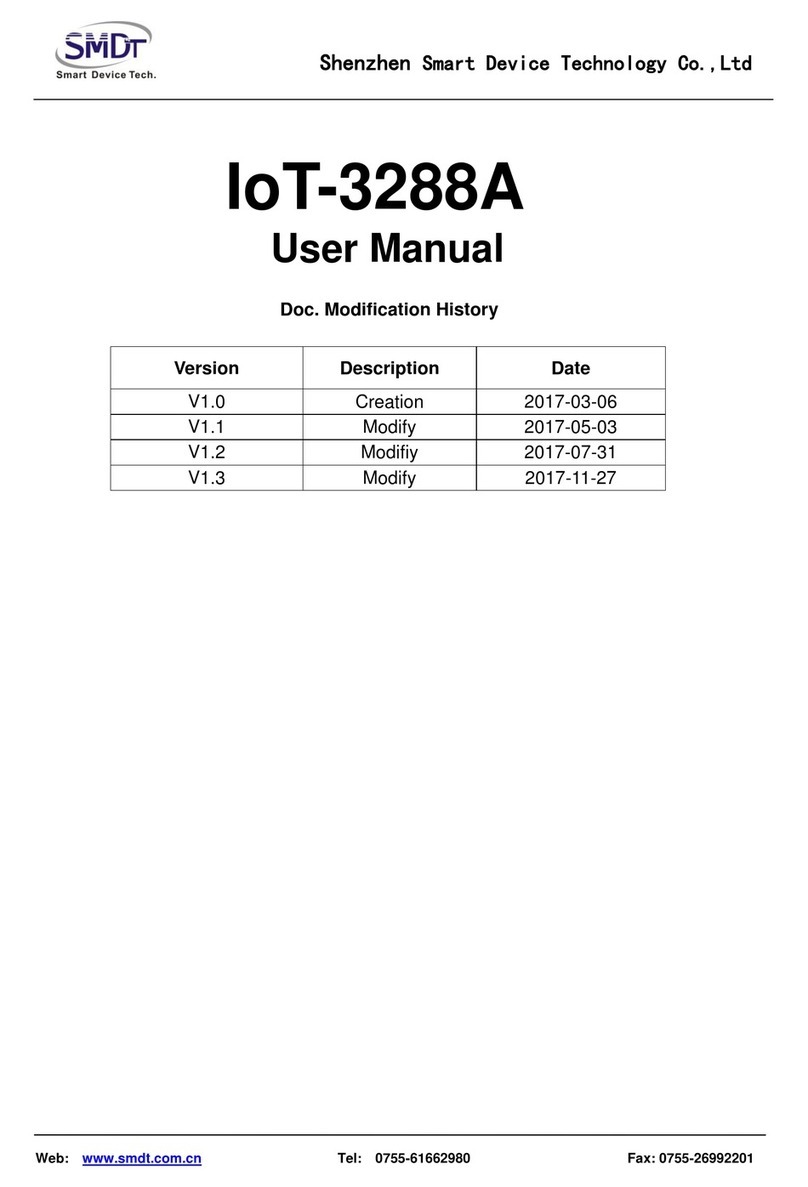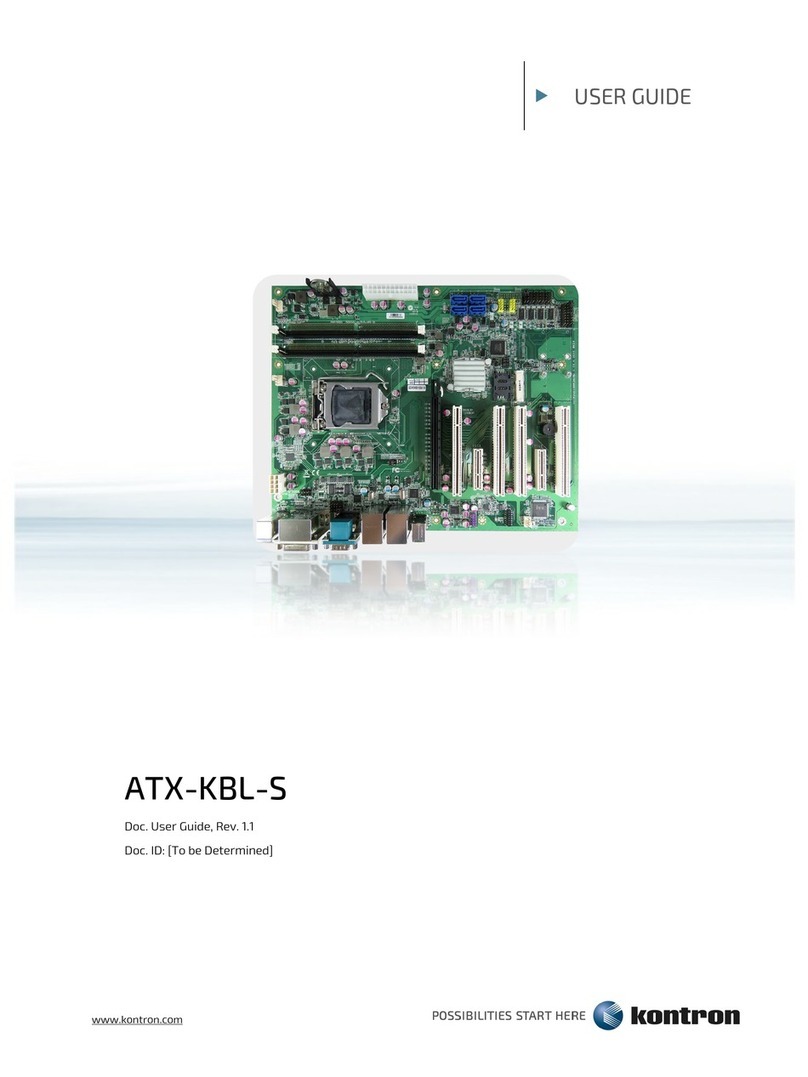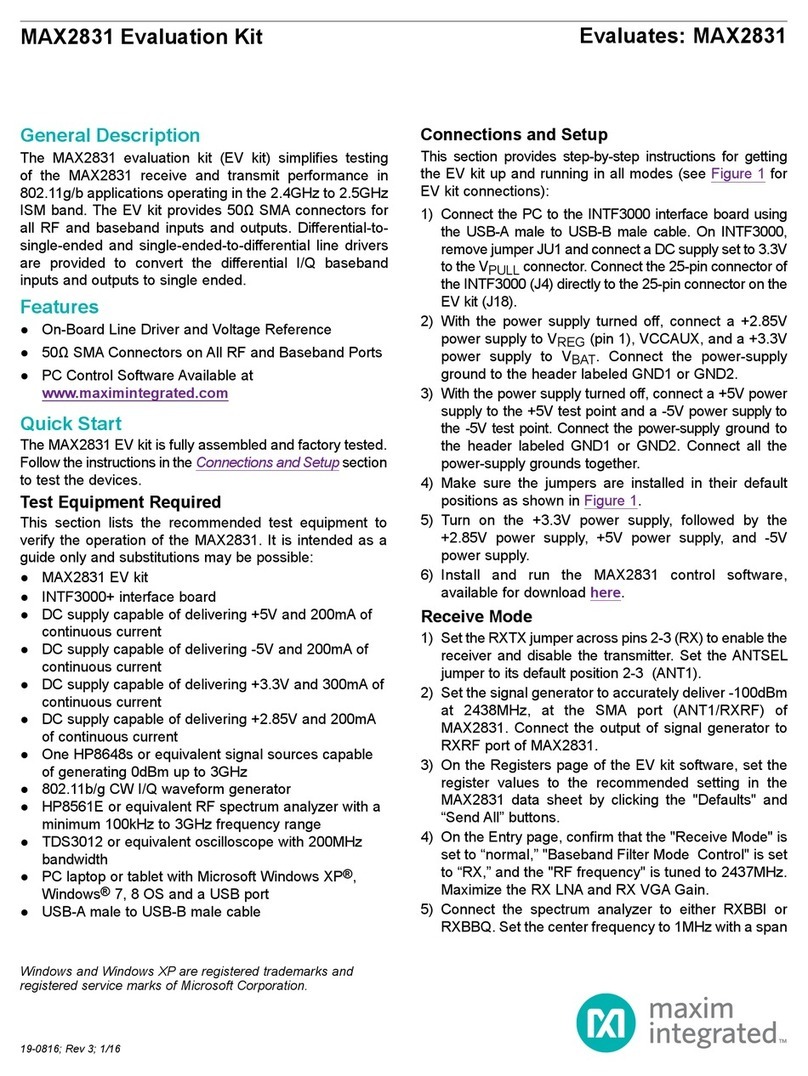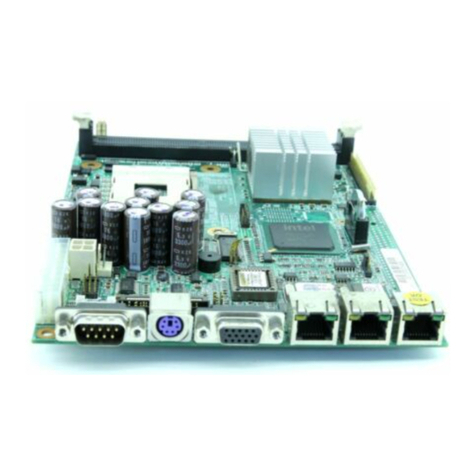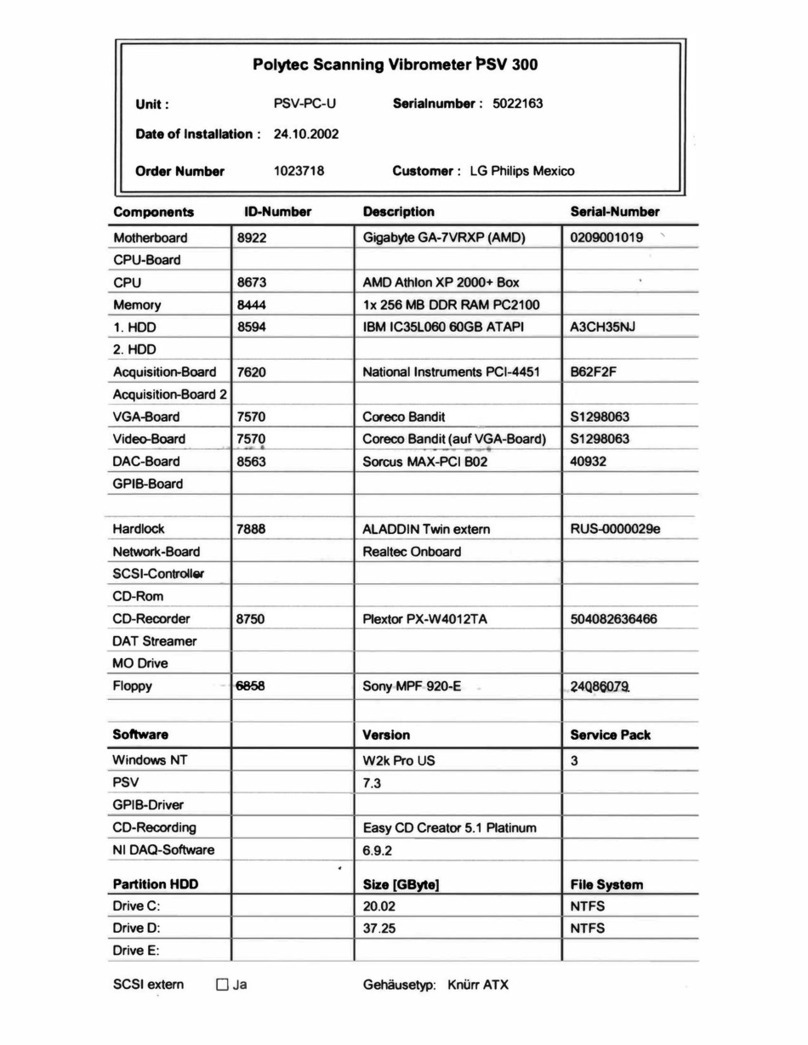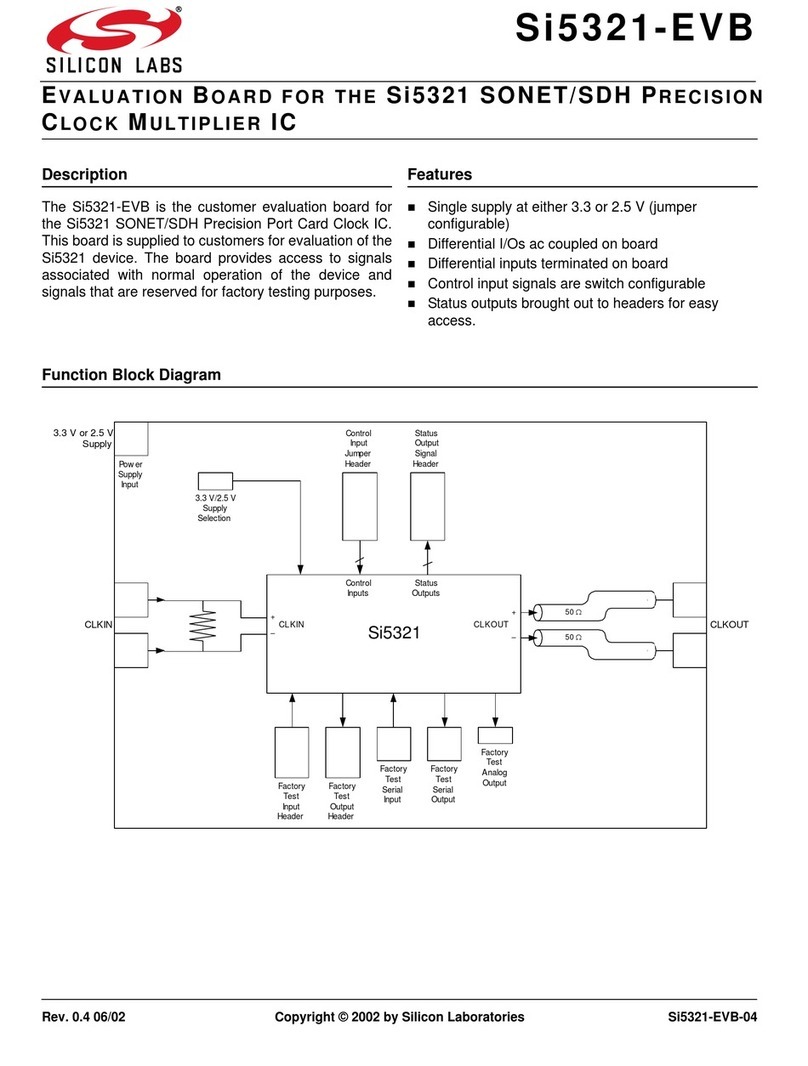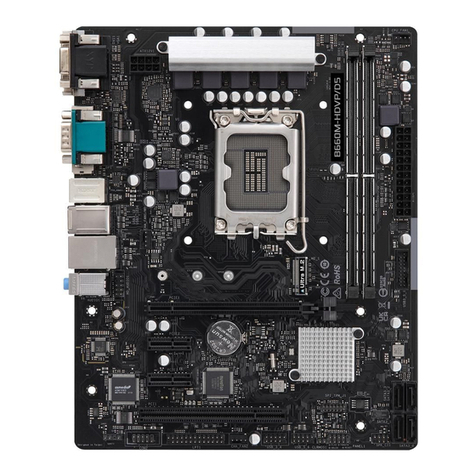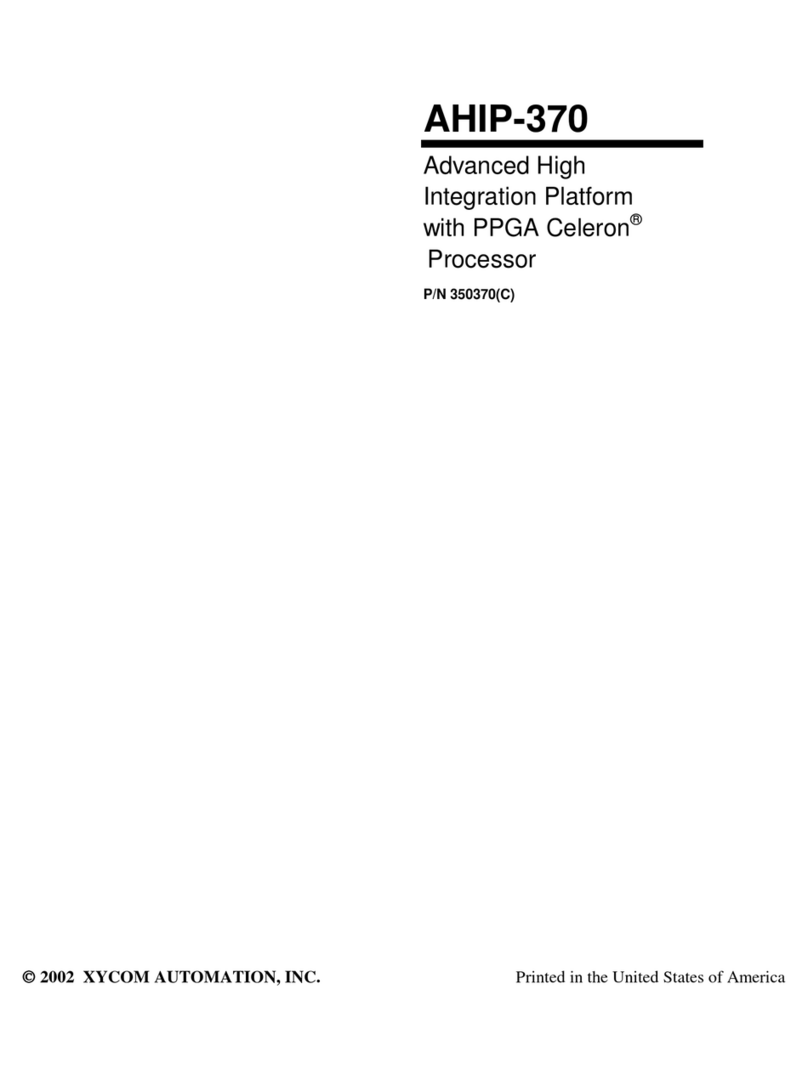HiSilicon Hi3516C V500 User manual

Hi3516C V500 Demo Board
User Guide
Issue
00B01
Date
2018-09-04
CEAC INTERNATIONAL LIMITEDHi3516C V500R001C02SPC001CEAC INTERNATIONAL LIMITEDHi3

Copyright © HiSilicon Technologies Co., Ltd. 2018. All rights reserved.
No part of this document may be reproduced or transmitted in any form or by any means without prior
written consent of HiSilicon Technologies Co., Ltd.
Trademarks and Permissions
, , and other HiSilicon icons are trademarks of HiSilicon Technologies Co., Ltd.
All other trademarks and trade names mentioned in this document are the property of their respective
holders.
Notice
The purchased products, services and features are stipulated by the contract made between HiSilicon and
the customer. All or part of the products, services and features described in this document may not be
within the purchase scope or the usage scope. Unless otherwise specified in the contract, all statements,
information, and recommendations in this document are provided "AS IS" without warranties, guarantees
or representations of any kind, either express or implied.
The information in this document is subject to change without notice. Every effort has been made in the
preparation of this document to ensure accuracy of the contents, but all statements, information, and
recommendations in this document do not constitute a warranty of any kind, express or implied.
HiSilicon Technologies Co., Ltd.
Address:
Huawei Industrial Base
Bantian, Longgang
Shenzhen 518129
People's Republic of China
Website:
http://www.hisilicon.com
Email:
CEAC INTERNATIONAL LIMITEDHi3516C V500R001C02SPC001CEAC INTERNATIONAL LIMITEDHi3

Hi3516C V500 Demo Board
User Guide
About This Document
Issue 00B01 (2018-09-04)
HiSilicon Proprietary and Confidential
Copyright © HiSilicon Technologies Co., Ltd.
i
About This Document
Purpose
This document describes the functional features, hardware features, and hardware
configurations of the Hi3516C V500 demo board. It also describes how to debug the Hi3516C
V500 demo board by using software.
Related Version
The following table lists the product version related to this document.
Product Name
Version
Hi3516C
V500
Intended Audience
This document is intended for:
Technical support engineers
Board hardware development engineers
Change History
Changes between document issues are cumulative. The latest document issue contains all
changes made in previous issues.
Issue 00B01 (2018-09-04)
This issue is first draft release.
CEAC INTERNATIONAL LIMITEDHi3516C V500R001C02SPC001CEAC INTERNATIONAL LIMITEDHi3

Hi3516C V500 Demo Board
User Guide
Contents
Issue 00B01 (2018-09-04)
HiSilicon Proprietary and Confidential
Copyright © HiSilicon Technologies Co., Ltd.
ii
Contents
About This Document......................................................................................................................i
1 Introduction....................................................................................................................................1
1.1 Overview..........................................................................................................................................................1
1.2 Deliverables......................................................................................................................................................1
1.3 Related Components ........................................................................................................................................1
2 Hardware ........................................................................................................................................2
2.1 Architecture and Interfaces...............................................................................................................................2
2.2 GPIO Distribution............................................................................................................................................3
3 Operation Guide ...........................................................................................................................5
3.1 Precautions.......................................................................................................................................................5
3.2 Board Settings..................................................................................................................................................5
3.3 DIP Switch Usage ............................................................................................................................................6
CEAC INTERNATIONAL LIMITEDHi3516C V500R001C02SPC001CEAC INTERNATIONAL LIMITEDHi3

Hi3516C V500 Demo Board
User Guide
Figures
Issue 00B01 (2018-09-04)
HiSilicon Proprietary and Confidential
Copyright © HiSilicon Technologies Co., Ltd.
iii
Figures
Figure 2-1 Interfaces on the Hi3516C V500 demo board......................................................................................2
Figure 3-1 Diagram of DIP switch usage ..............................................................................................................7
CEAC INTERNATIONAL LIMITEDHi3516C V500R001C02SPC001CEAC INTERNATIONAL LIMITEDHi3

Hi3516C V500 Demo Board
User Guide
Tables
Issue 00B01 (2018-09-04)
HiSilicon Proprietary and Confidential
Copyright © HiSilicon Technologies Co., Ltd.
iv
Tables
Table 2-1 Peripheral interfaces on the Hi3516C V500 demo board ......................................................................3
Table 2-2 GPIO distribution of the Hi3516C V500 demo board...........................................................................3
Table 3-1 Board settings in various boot modes....................................................................................................5
CEAC INTERNATIONAL LIMITEDHi3516C V500R001C02SPC001CEAC INTERNATIONAL LIMITEDHi3

Hi3516C V500 Demo Board
User Guide
1 Introduction
Issue 00B01 (2018-09-04)
HiSilicon Proprietary and Confidential
Copyright © HiSilicon Technologies Co., Ltd.
1
1 Introduction
1.1 Overview
The Hi3516C V500 demo board is a function demonstration board that is developed based on
the HiSilicon media processor Hi3516C V500. The demo board provides superior multimedia
processing functions, various peripheral interfaces, and hardware reference designs based on
the Hi3516C V500. You can complete hardware development by modifying only module
circuits on the demo board.
1.2 Deliverables
The Hi3516C V500 demo board package provides the following items:
One Hi3516C V500 demo board: Hi3516C V500DMEB
One sensor board
One power adapter with the specifications of 100–240 VAC input, 50 Hz and 12 V DC
output, 2 A
16-bit wide DDR3 SDRAM, 2 Gb, with the H5TQ2G63GFR model
16 MB SPI NOR flash with the MX25L12835 model
1.3 Related Components
The following components are not included in the Hi3516C V500 demo board package;
however, they are required for program debugging. Therefore, you must prepare them.
Network cables
Audio/Video receiving devices such as the TV set, stereo equipment, and camera
Serial cables
CEAC INTERNATIONAL LIMITEDHi3516C V500R001C02SPC001CEAC INTERNATIONAL LIMITEDHi3

Hi3516C V500 Demo Board
User Guide
2 Hardware
Issue 00B01 (2018-09-04)
HiSilicon Proprietary and Confidential
Copyright © HiSilicon Technologies Co., Ltd.
2
2 Hardware
2.1 Architecture and Interfaces
Figure 2-1 shows the interfaces on the Hi3516C V500 demo board.
Figure 2-1 Interfaces on the Hi3516C V500 demo board
Table 2-1 describes the corresponding peripheral interfaces, keys, and switches in Figure 2-1.
CEAC INTERNATIONAL LIMITEDHi3516C V500R001C02SPC001CEAC INTERNATIONAL LIMITEDHi3

Hi3516C V500 Demo Board
User Guide
2 Hardware
Issue 00B01 (2018-09-04)
HiSilicon Proprietary and Confidential
Copyright © HiSilicon Technologies Co., Ltd.
3
Table 2-1 Peripheral interfaces on the Hi3516C V500 demo board
No.
Description
1
USB 2.0 port
2
Micro SD card connector
3
12 V power connector
4
UART0 connector
5
Megabit Ethernet port
6
JTAG connector
7
Liquid crystal display (LCD) connector
8
Wi-Fi connection
9
UPDATE_MODE key
10
LSADC_CH0 input key 2
11
LSADC_CH0 input key 1
12
Analog audio output connector
13
Analog audio MIC input interface of Hi3516C V500
14
2-wire UART1 port
15
DC_IRIS connector used to connect the IRIS interface and the DC_IRIS lens
16
P_IRIS connector used to connect the IRIS interface and the P_IRIS lens
17
Sensor connector used to connect Hi3516C V500 to the sensor board
18
Testing interface for the core power and DDRIO power
2.2 GPIO Distribution
Table 2-2 describes the GPIO distribution of the Hi3516C V500 demo board.
Table 2-2 GPIO distribution of the Hi3516C V500 demo board
GPIO
Description
Board Processing
Mode
GPIO0_0/UPDATE_MODE
UPDATE_MODE_N
A 10 kilohm pull-up
resistor is connected.
The update is triggered
at a low level.
GPIO0_1/I2C3_SDA/LCD_DA
TA20
I2C3_SDA
I2C3, externally
connected to a 10
CEAC INTERNATIONAL LIMITEDHi3516C V500R001C02SPC001CEAC INTERNATIONAL LIMITEDHi3

Hi3516C V500 Demo Board
User Guide
2 Hardware
Issue 00B01 (2018-09-04)
HiSilicon Proprietary and Confidential
Copyright © HiSilicon Technologies Co., Ltd.
4
GPIO
Description
Board Processing
Mode
kilohm pull-up resistor
GPIO0_2/I2C3_SCL/LCD_DA
TA19
I2C3_SCL
GPIO0_3/IR_IN/LCD_DATA1
8
P_IRIS_CONTROL1
P_IRIS_CONTROL1
GPIO0_4/LCD_DATA21
P_IRIS_CONTROL2
P_IRIS_CONTROL2
GPIO0_5/LCD_DATA22
P_IRIS_CONTROL3/LCD_
RST. LCD_RST is used for
output by default, active low.
LCD_RST is soldered.
GPIO0_6/LCD_CLK/VOU_CL
K
P_IRIS_CONTROL4
P_IRIS_CONTROL4
I2C7_SCL/GPIO10_6
HOST_WAKEUP_WL,
indicating Wi-Fi wakeup
signal, high enable
-
I2C7_SDA/GPIO10_7
TP
Test point
LSADC_CH1/GPIO10_4
SGM8903 mute control
output, active low
Connects to a 4.7
kilohm pull-down
resistor.
UART1_CTSN/GPIO5_1/UAR
T4_TXD
WIFI_LED, indicating Wi-Fi
status indicator control. The
indicator is on when the
output is high level and off
when the output is low level.
-
UART1_RTSN/GPIO5_0/UAR
T4_RXD
UPDATE_LED, indicating
update status indicator
control. The indicator is on
when the output is high level
and off when the output is
low level.
-
CEAC INTERNATIONAL LIMITEDHi3516C V500R001C02SPC001CEAC INTERNATIONAL LIMITEDHi3

Hi3516C V500 Demo Board
User Guide
3 Operation Guide
Issue 00B01 (2018-09-04)
HiSilicon Proprietary and Confidential
Copyright © HiSilicon Technologies Co., Ltd.
5
3 Operation Guide
3.1 Precautions
The Hi3516C V500 demo board applies to the laboratory or engineering development
environment. Take the following precautions before performing operations:
CAUTION
Never perform the hot-swap operation on the board in any case.
Take antistatic measures before unpacking or installing the board to prevent the board
hardware from being damaged by the electrostatic discharge (ESD).
Hold the board on the edge and do not touch the exposed metal on the board. Otherwise,
the board components may be damaged by the ESD.
Place the Hi3516C V500 demo board on a dry workstation and keep it away from heat
sources, electromagnetic interference sources, radiant sources, and electromagnetic
susceptibility equipment (such as the medical equipment).
Familiarize yourself with the layout of the Hi3516C V500 demo board. See Figure 2-1.
Ensure that you can identify the components such as the switches, connectors, and
indicators and know their positions.
3.2 Board Settings
The operating mode of the Hi3516C V500 is selected by using the keys and selecting the
resistors to be welded on the Hi3516C V500 demo board. See Table 3-1.
Table 3-1 Board settings in various boot modes
Boot Mode
Value
Resistor
Connection
Remarks
BOOT_SEL[1:0]
00
SW1.4 and
SW1.3 are set to
0.
Boot from the SPI flash.
CEAC INTERNATIONAL LIMITEDHi3516C V500R001C02SPC001CEAC INTERNATIONAL LIMITEDHi3

Hi3516C V500 Demo Board
User Guide
3 Operation Guide
Issue 00B01 (2018-09-04)
HiSilicon Proprietary and Confidential
Copyright © HiSilicon Technologies Co., Ltd.
6
Boot Mode
Value
Resistor
Connection
Remarks
01
SW1.4 is set to 0,
while SW1.3 is
set to 1.
Boot from the eMMC.
10
SW1.4 is set to 1,
while SW1.3 is
set to 0.
Fastboot
Update SPI flash (default)
11
SW1.4 and
SW1.3 are set to
1.
Fastboot
Update eMMC (default)
[SFC_DEVICE_MO
DE:
SFC_BOOT_MODE]
00
SW1.1 is set to 0,
R188 is removed,
and R367 is
soldered.
SPI NOR flash. The default
addressing mode is 3-byte mode.
01
SW1.1 is set to 0,
R367 is removed,
and R188 is
soldered.
SPI NOR flash. The default
addressing mode is 4-byte mode.
10
SW1.1 is set to 1,
R188 is removed,
and R367 is
soldered.
SPI NAND flash. The default
addressing mode is 1-wire boot
mode.
11
SW1.1 is set to 1,
R367 is removed,
and R188 is
soldered.
SPI NAND flash. The default
addressing mode is 4-wire boot
mode.
UPDATE_MODE
0
S3 key is pressed
down.
Enable update from SDIO0 or
USB.
1
S3 key is not
pressed down.
Disable UPDATE_MODE
(default).
3.3 DIP Switch Usage
As shown in Figure 3-1, the pin1 side of the DIP switch is 1while the other side is 0.
CEAC INTERNATIONAL LIMITEDHi3516C V500R001C02SPC001CEAC INTERNATIONAL LIMITEDHi3

Hi3516C V500 Demo Board
User Guide
3 Operation Guide
Issue 00B01 (2018-09-04)
HiSilicon Proprietary and Confidential
Copyright © HiSilicon Technologies Co., Ltd.
7
Figure 3-1 Diagram of DIP switch usage
CEAC INTERNATIONAL LIMITEDHi3516C V500R001C02SPC001CEAC INTERNATIONAL LIMITEDHi3
Table of contents
Other HiSilicon Motherboard manuals
